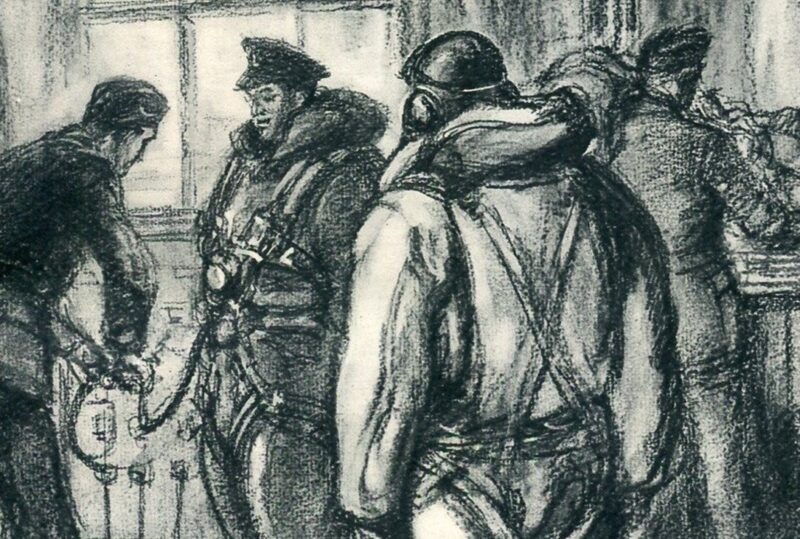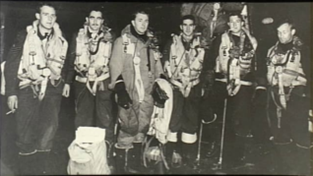Stories
Stories
Rear Gunners’ Electrically Heated Suits
Tail Gunners, in their Perspex turrets were exposed to freezing conditions on their flights. The temperature in the turret, could drop to -40°C. To combat this, electrically heated suits were developed by the Royal Aircraft Establishment (RAE) as part of their “RAE system” of wired and heated clothing.

An illustration by war artist Bryan de Grineau
This illustration by war artist, Captain Bryan de Grineau, shows a Lancaster crew preparing for a raid on Berlin. It was published in The Illustrated London News on the 18th of December 1943. A feature of the illustration is a rear-gunner (second-left) who is having his electrically heated suit tested before flying.
The suits were one-piece, button-fronted, and made of brown union twill or cotton lined rayon with a knitted collar. They featured embedded heating wires which connected to the bomber’s electrical system by way of a flexible cable with a three-pin connection for the electrical supply, and snap connectors at the wrists and ankle. The suit contained a heavy insulation of kapok to provide buoyancy in case of ditching.
The suits combined with heated gloves and boots, provided much-needed warmth, enabling the Gunners to remain vigilant and responsive to enemy night-fighter attacks despite the freezing conditions. However they were cumbersome, especially in the confined space of the turret (see photo below, with the rear gunner third from left).

An unknown crew prepare to board their aircraft, the rear gunner, wearing his heated suit is third from left.
And the suits were not without reliability issues. Early models displayed a regrettable tendency to malfunction, even shorting out in mid-air, causing fires. If that happened the poor Gunner had to strip out of his suit to extricate himself from the burning clothing.
With no thermostat, the suits would not remain at a steady temperature. If they became too warm, the Gunner risked falling asleep, the crew losing their most critical eyes for attacking aircraft. Failure to provide sufficient heat left the airman dreadfully exposed to freezing conditions.
The suits required careful handling and maintenance to avoid damage during missions and hence the need for testing ahead of operations. Eventually the heated clothing was perfected and became more reliable.